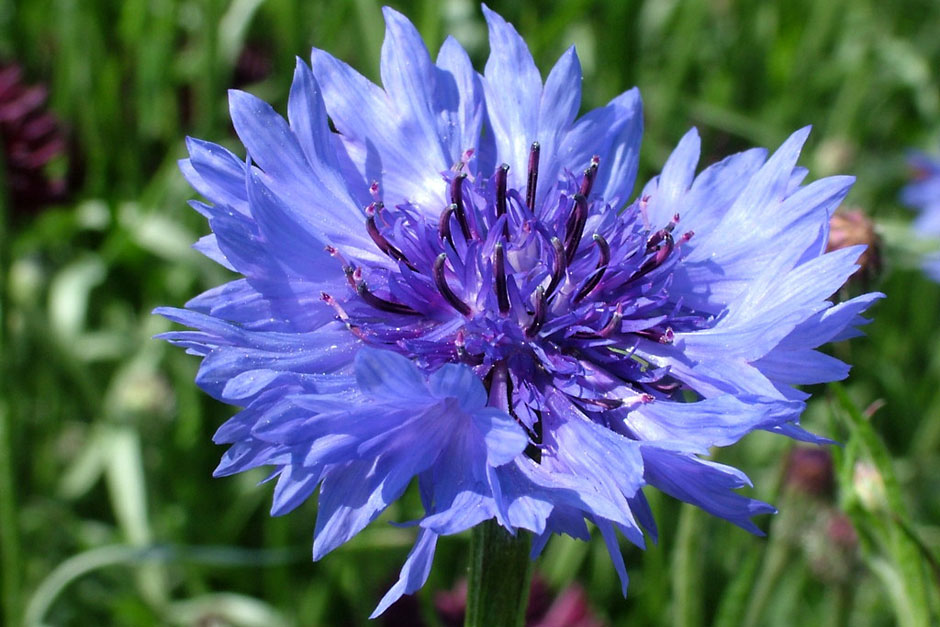The National Flower of Germany is Centaurea cyanus (cornflower). It is native to Germany and other parts of Europe. It is considered as the beauty of European gardens. It is highly loved throughout Germany. For German people, it symbolizes some sort of sign which is the symbol for unmarried people in Germany.

Interesting Facts about Cornflower.
The Centaurea Cyanus also know as the cornflower. Centaurea cyanus is its scientific name. It belongs to family Asteraceae and Centaurea is a genus. It is an annual flower. It is an annual growing flower with grey-green branch stems. It can grow from 16 inches to 35 inches tall.
The leaves of the flower can grow fro 1 cm 4 cm long. The flowers of this species are 1.5 cm to 3 cm in diameter and its colour is intense blue or deep blue. The blue pigment is proto cyanin. Protocyanin is an anthocyanin that is responsible for the red colour of roses but in cornflower, it gives a blue colour.
It is used as an ingredient in herbal teas and many other drinks and edible. The native people consider this flower as the sign of love if the blue cornflower turned to fade then it is considered as the negative sign if not then it is fairly a positive sign for lovers.
Related: Popular Event
Why Cornflower is the national flower of Germany?
There is much reason for which the blue cornflower is the national flower of Germany. As it is the symbol of love, and to wear the blue cornflower label on hand symbolize the unmarried people. It is available in excess amount throughout the country. It is not only the national flower of Germany but also the symbol of Estonian political party( Finnish Party). It is famous for its unique uses and beauty.
